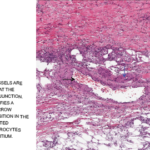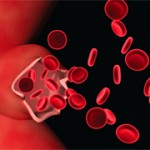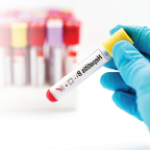Seufarth’s symptoms advanced quickly over his 30-day hospitalization, ultimately leading to his death. With the therapeutic tools then available, there was little that Kussmaul could do as treating physician. The authors described Seufarth on the day before his death: “The patient was in a state of extreme weakness. He was scarcely able to speak, lay with persistent severe abdominal and muscle pains, opisthotonically stretched, whimpering, and begged the doctors not to leave him.”1,4
Throughout his illness, the treating clinicians were quite puzzled by the patient’s presentation. Seufarth’s illness could not be fitted into any previously defined clinical picture. “We deemed it wise to forego a diagnosis,” the authors noted. “It was either an unusually complicated trichinosis, or must be an altogether still little known, or unknown illness. It is understandable that under these circumstances, we awaited the results of the autopsy with great anticipation.”1
The autopsy report revealed unusual findings of visible nodules along medium-sized arteries. “One glimpse of the transected muscles … immediately demonstrated something unusual … numerous, whitish small tumors up to the size of poppy seeds and hemp seeds.”
Kussmaul and Meier described, “peculiar mostly nodular thickening (periarteritis nodosa) of countless arteries of and below the caliber of the liver artery and the major branches of the coronary arteries of the heart, principally in the bowel, stomach, kidneys, spleen, heart and voluntary muscles, and, to a lesser extent, also in the liver, subcutaneous cell tissue, and in the bronchial and phrenic arteries.” Kussmaul and Meier suggested the term periarteritis nodosa, due to this nodular thickening over blood vessels and the perceived localization of the inflammation to the perivascular sheaths, media and outer layers of the arterial walls.1,4
Now, many other techniques are available to the astute clinicians, including techniques from molecular biology, gene sequencing & detailed medical imaging. Yet when not paired with careful clinical observations, such tests can sometimes lead us astray.
The Paradigmatic Vasculitis
The disease served as a reference point for forms of noninfectious idiopathic vasculitis that were subsequently identified. Its research led to breakthroughs in understanding the pathophysiology of other forms of vasculitis. Dr. Matteson notes, “This description was a really important moment because it became a comparator for other forms of vasculitis that were subsequently described.” Other forms were characterized in terms of their similarities or differences to the constellation of signs, symptoms and pathological findings.5
In the decades to follow, most forms of vasculitis were termed periarteritis nodosa. Even early cases of Kawasaki disease were initially labeled “infantile periarteritis nodosa.” In the early 1900s, the term polyarteritis nodosa began to replace periarteritis nodosa, to emphasize the fact the lesions were found to be transmural and the fact that multiple arteries were affected.4



